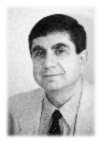 |
Harvey H. Jay, M.D.
|
Harvey H. Jay, M.D.
45 East 62nd. St., New York, NY 10065
Tel: 212-755-2237 * Fax: 212-755-3359


Health Wise
Health Wise: A publication of The New York
Hospital-Cornell Medical Center
Non-Invasive technique is also effective for veins on the face and other vascular conditions.
Since the advent of the mini skirt in the 1960's, women have embraced opaque pantyhose and leg makeup as ways to hide spider and varicose veins. Varicose and spider veins result when blood is not pumped efficiently through the area so that the vein walls stretch and bulge, and new vessels are formed. This change is what is viewed on the surface of the skin as purplish or reddish bulges or splotches. Varicose veins are largely hereditary hut can also he caused by obesity, aging, prolonged standing, and pregnancy. Large varicose veins may cause symptoms such as swelling, fatigue, aching, burning, throbbing, itching and cramping. In severe cases, there may he pain, or symptoms which may indicate a more serious vascular disorder. The blue spiky areas on the skin called spider veins are caused by damage to smaller blood vessels such as capillaries.
A number of treatments were developed over the years to deal with leg veins for both cosmetic and health reasons. Surgical ligation, where the bulging part calf the vein is cut away, is often used for large varicose veins. Convalescence is usually necessary after this surgery, and small scars remain where the incisions were made. In sclerotherapy, a chemical is injected into the vein which causes it to collapse and be absorbed. Very small vessels may he difficult to reach using this method.
The newest treatment for benign vascular lesions, which include spider veins on the face and port wine stains, uses pulses of light to destroy the damaged vessels. According to Harvey H. Jay, M.D., a dermatologist and Clinical Assistant Professor of Dermatology at The New York Hospital Cornell Medical Center, 'This procedure is performed in the doctor's office. There is very little discomfort and patients return to their regular activities immediately. No anesthesia is required and no injections are involved'.
Dr. Jay notes that this new technology called PhotoDerrm VL allows for much flexibility in the duration and intensity or each light pulse. This means that treatment can he customized for a wider range of problems. After treatment, veins begin to fade until they disappear. Treatment for varicose and spider veins using PhotoDerm VL generally involves one to five office visits, depending on the condition of the veins. After the procedure, there may be slight reddening of the skin which disappears within a few hours to a few days. Temporary changes in skin color may also occur. Lighter skin types may require fewer treatments than darker skin tvpes. 'Although this treatment is highly effective for most patients it is not recommended for patients with diabetes, nor for pregnant women', says Dr. Jay.
[The Scarsdale Inquirer] [CBS Internet Minute] [Newsday]
[THE LANCET] [Health Wise] [Vogue] [Men's Journal]
[Home]
Questions? Comments? Please contact us.
Home - FAQ - Before and After Photos - Skin and Treatment Information - In the News - About Dr. Jay - Contact Us - Site Map
Copyright © Harvey H. Jay, M.D. 1996 - 2011. All Rights Reserved.